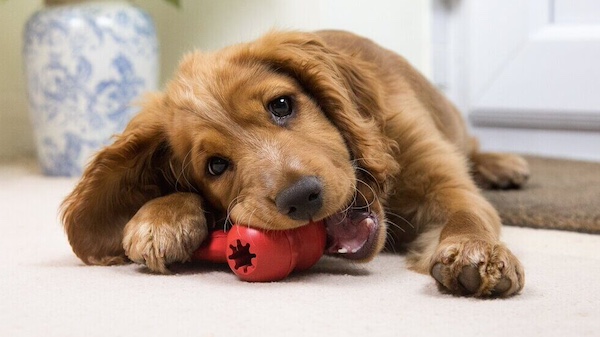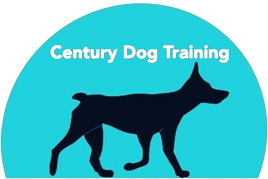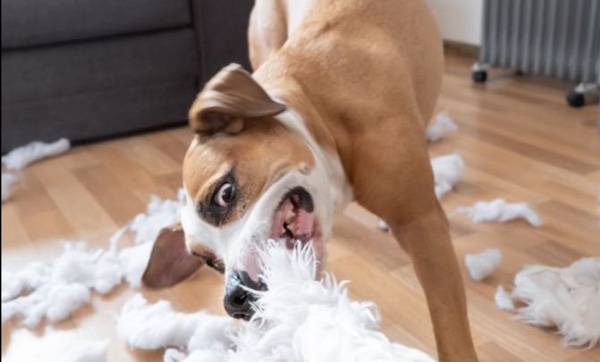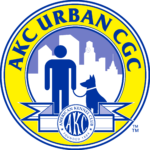Destructive chewing is a common behavioral issue that many dog owners face. While dog chewing is a natural behavior for dogs, it can become a problem when it damages furniture, shoes, or other household items.
Understanding why your dog is chewing and addressing the root causes is key to curbing this behavior. In this post, we’ll explore the causes of destructive chewing, how to prevent it, and practical solutions to help your dog develop healthier chewing habits.
Why Dogs Chew
Chewing is a natural behavior for dogs and serves several important purposes. However, when this instinct is not properly managed, it can lead to destructive outcomes. Here are some of the most common reasons dogs chew:
Natural Behavior
Dogs explore their world through their mouths. Chewing helps them engage with their environment and keep their teeth clean and healthy. It’s an instinctual activity that provides mental and physical stimulation.
Teething
For puppies, chewing is a way to relieve the discomfort of teething as their adult teeth come in. This phase typically lasts until they are about six months old.
Boredom
Dogs with too much energy and not enough stimulation may chew out of frustration. Without appropriate outlets, they’ll turn to whatever is available—often furniture or personal belongings.
Anxiety or Stress
Dog chewing can be a coping mechanism for dogs dealing with anxiety or stress, such as separation anxiety. The act of chewing can be soothing and help relieve nervous energy.
Attention-Seeking Behavior
Sometimes, dogs chew on inappropriate items to get their owner’s attention. This behavior often develops when a dog learns that chewing on the wrong item results in interaction, even if it’s negative.
Identifying the Causes of Destructive Chewing
Before you can address destructive chewing, it’s important to identify the root cause. Observing your dog’s behavior can provide valuable clues.
- Patterns and Triggers: Pay attention to when your dog chews. Does it happen when they’re alone, bored, or after a stressful event? This can help you pinpoint the cause.
- Anxiety-Related Chewing: If your dog only chews when you’re not home, it may be a sign of separation anxiety.
- Normal vs. Destructive Chewing: It’s natural for dogs to chew on toys or bones, but destructive chewing involves inappropriate items like furniture, shoes, or electrical cords.
Once you understand the cause, you can tailor your approach to address the specific issue effectively.
Preventing Destructive Chewing

The best way to deal with destructive chewing is to prevent it from happening in the first place. Here are some steps you can take:
Provide Appropriate Chewing Outlets
Give your dog a variety of safe chew toys to satisfy their natural chewing instinct. Choose toys made from durable materials that are appropriate for your dog’s size and chewing strength. Rotate toys regularly to keep them interesting.
Puppy-Proof Your Home
If you have a puppy, take steps to remove access to valuable or dangerous items. Keep shoes, remote controls, and cords out of reach, and use baby gates to block off areas where your dog might find trouble.
Supervise and Redirect
When your dog starts chewing on something they shouldn’t, calmly redirect them to an appropriate chew toy. Praise them when they choose the correct item to reinforce the behavior you want.
Limit Unsuitable Access
Use crates, baby gates, or closed doors to restrict your dog’s access to rooms or items they’re prone to chewing. This also helps keep them safe when you’re not able to supervise them.
Solutions for Addressing Destructive Chewing
If your dog is already engaging in destructive chewing, there are effective strategies to address the behavior:
Exercise and Mental Stimulation
A tired dog is a happy dog. Regular physical activity and mental stimulation can help reduce destructive behaviors. Take your dog on daily walks, play games like fetch, and provide puzzle toys to keep their mind active.
Teach the “Leave It” Command
Training your dog to understand the “leave it” command can prevent them from chewing on inappropriate items. Start by showing your dog a treat and saying “leave it.” When they stop reaching for the treat, reward them with praise and a different treat. Gradually apply the command to other items, like shoes or furniture.
Use Deterrent Sprays
Pet-safe deterrent sprays can discourage your dog from chewing on furniture or other household items. Apply the spray to items you want your dog to avoid. The unpleasant taste will discourage them from chewing on these objects.
Create a Safe Space for Anxiety
If your dog’s chewing is anxiety-driven, provide them with a calm and secure environment. Use comforting items like their favorite blanket or toys, and consider calming aids like pheromone diffusers or anxiety wraps.
Reinforcing Positive Chewing Behavior
Teaching your dog what to chew—and what not to chew—requires consistent reinforcement of positive behavior.
Reward Good Choices
Whenever your dog chews on an appropriate item, reward them with treats, praise, or playtime. Positive reinforcement helps your dog associate good behavior with pleasant outcomes, encouraging them to make the right choices.
Be Consistent
Training your dog requires patience and consistency. Always reinforce the rules and redirect your dog to appropriate chewing outlets. Avoid confusing your dog by allowing them to chew on old shoes or furniture—they won’t understand the difference between acceptable and unacceptable items.
Patience and Understanding
Punishing your dog for chewing is counterproductive and can increase anxiety or confusion. Instead, focus on guiding your dog toward the behaviors you want to see and reinforcing those with positive feedback.
Conclusion
Destructive chewing can be frustrating, but it’s important to remember that chewing is a natural behavior for dogs. By understanding the causes, providing appropriate outlets, and addressing the underlying issues, you can help your dog develop healthier chewing habits.
Take steps to puppy-proof your home, provide plenty of mental and physical stimulation, and use positive reinforcement to guide your dog’s behavior. With patience, consistency, and the right strategies, you can turn destructive chewing into a thing of the past and create a more harmonious environment for you and your dog. Start today to help your furry friend thrive!





